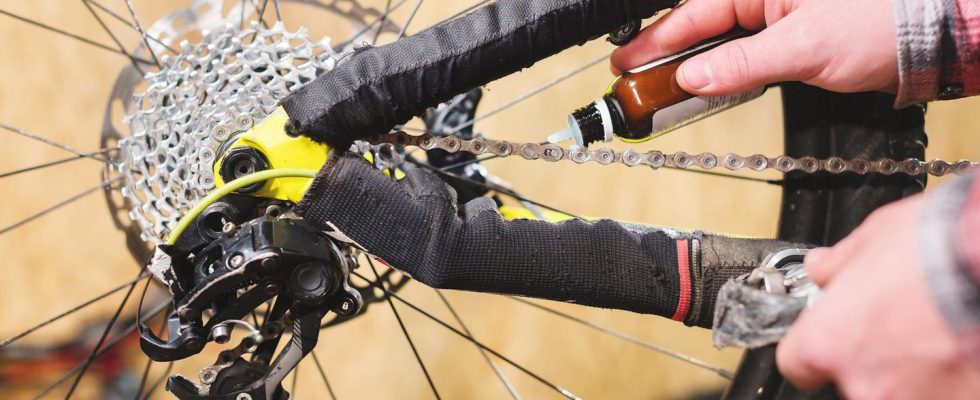Tools & Tips
Runs like clockwork: Three steps to a well-maintained bicycle chain
A good, well-maintained bicycle chain is the be-all and end-all of every bike. You can find out here how to quickly and efficiently remove dirt from the chain and lubricate it for the next tour.
© yanik88 / Getty Images
A look at the chain usually reveals how much time and love cyclists put into their bike. A few minutes of affection are enough for the bicycle chain to purr like a kitten again. Our crash course for cleaning the chain.
A well-maintained chain is the be-all and end-all of every bicycle. Along with the brake shoes and tires, it is considered the attachment with the greatest wear. Because Bicycle chains have to withstand a lot. They lie on the chainring and sprocket set and do hard work as soon as the pedals are moved. They transfer the force exerted on the pedals to the sprocket and thus to the rear wheel. If the chain breaks, the bike stops. It’s that simple. And it suffers especially when the bike is left outdoors frequently and for long periods of time. Commuters and bikers who don’t have a dry place to park their bike should pay a little more attention to their bike chain. In short: To ensure that the chain runs smoothly and the bike rolls smoothly through autumn and winter, you have to do it every now and then.
You can find out here what you should pay attention to and which tools are important for this.
Cleaning a bicycle chain: All good things come in threes
A cotton cloth, one Chain brush and a bottle chain oil. That’s all you need to keep a bicycle chain in good condition. If you use a cotton cloth, a discarded T-shirt will also work. If you want to save money on a chain brush, grab an old toothbrush. Only when it comes to chain oil does it become difficult to improvise. Here, experts recommend high-quality lubricants from specialist retailers. For the sake of the environment, it should be as small as possible biodegradable chain oil be. A practical tool for cleaning bicycle chains (and all sorts of other small and large assemblies on the bike) is a Assembly stand. These are now also available in a handy folding format, so that the stand doesn’t take up too much space in the basement or garage. Assembly stands are particularly useful for hydraulic brakes. Bikes with disc brakes should generally not be placed upside down, i.e. handlebars and saddle. For other bikes this is a good alternative to the assembly stand.
Three steps to a perfectly maintained chain
Step 1: Remove coarse dirt from the bicycle chain
Before wiping and oiling, dirt and trapped stones must be removed from the chain links. To do this, you work along the chain piece by piece with a small brush and free it from the remains of the last bike tour through the forest. Pay particular attention to small stones, which can be fumbled out of the chain with a toothpick in an emergency.
Step 2: Clean the bicycle chain
For detailed work, the second step is to use a dry cotton cloth. Important: The drive and wheels must be free during this step. Hold the chain with the cloth and let it run loosely two to three times by turning a pedal by hand. If the fine dirt is a little more stubborn, the cloth can be slightly moistened and prepared with a few squirts of dishwashing liquid. After this step at the latest, check whether individual chain links are mechanically damaged. In this case you can save yourself the chain oil. Because then the chain has to be replaced.
Step 3: Apply chain oil carefully
In the final step, fresh oil is added to the chain. To do this, hold a second cotton cloth and that Bottle of chain oil ready. Gently drizzle the oil onto each chain link while turning the pedals evenly and slowly. To collect excess oil, place a rag or cloth under the repair stand or wheel. The oil should be left to work for about 15 minutes before excess lubricant can be wiped off. Spray lubricants are a little more convenient, but more difficult to dose. Also pay attention Chain spray make sure the chain is clean and dry. The leftovers can also be picked up with a cotton cloth. When spraying, you should definitely avoid getting oil on the brake surfaces or brake discs. The greasy film can have fatal consequences the next time you brake hard.
Source:ADAC
You might also be interested in:
This article contains so-called affiliate links. Further information are available here.


